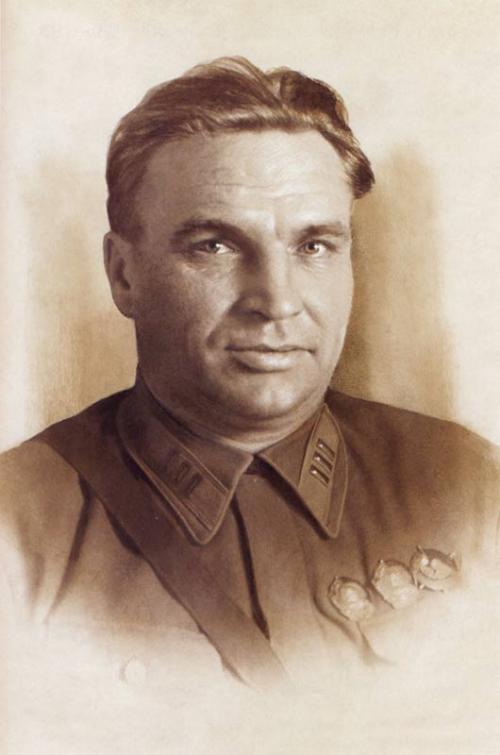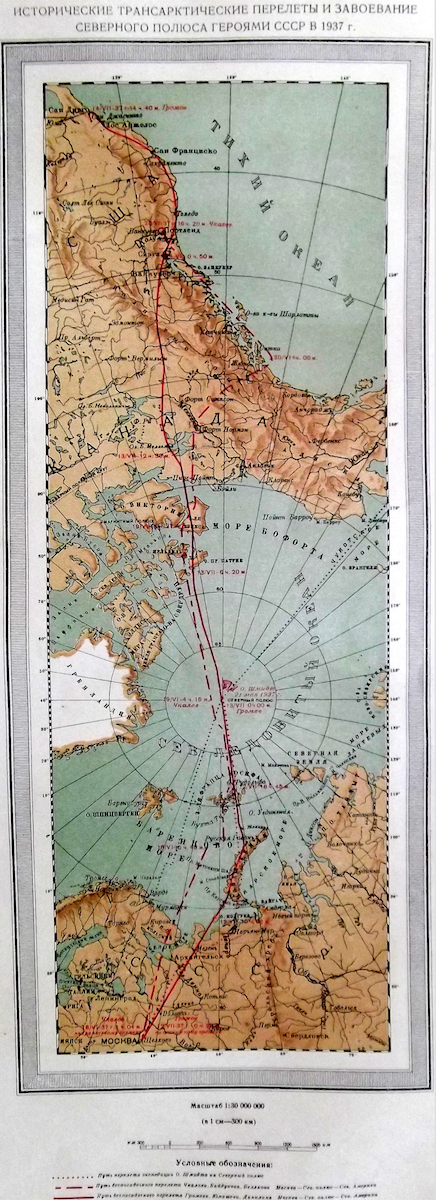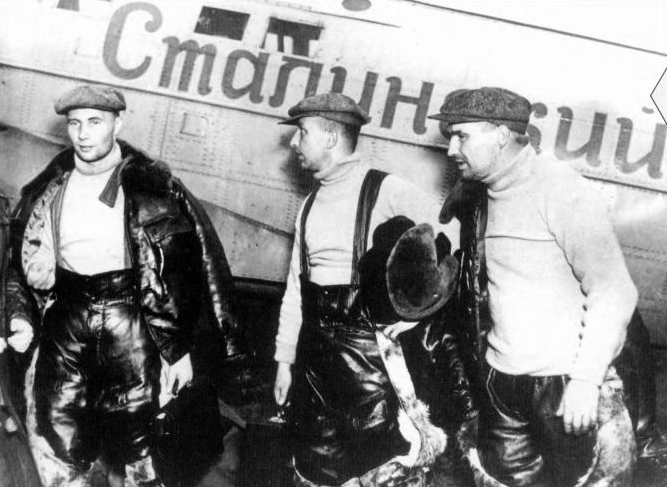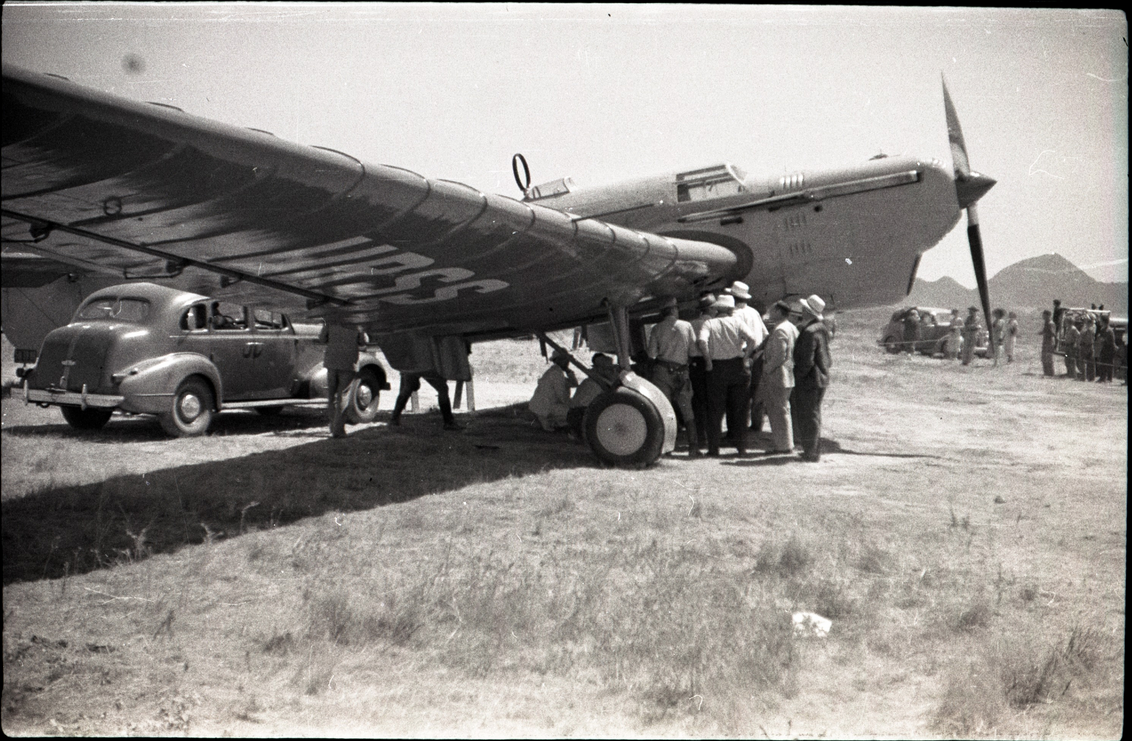
18–20 June 1937: The number 1 prototype Tupolev ANT-25, with pilot Valery Pavlovich Chkalov, Georgy Filippovich Baydukov (co-pilot/radio/navigator) and Alexander Vasilyevich Belyakov (radio/navigator) departed Shchelkovo airfield near Moscow, Russia, at 4:04 a.m. (01:04 GMT), 18 June, and flew north along the E. 38° meridian toward the North Pole, and beyond that, south along the W. 123° meridian toward San Francisco, California, U.S.A.

The Tupolev ANT-25RD was an experimental very long range airplane, built by OJSC Voronezh, intended to set distance records. It also served as a prototype for a long-range bomber, which was designated DB-1.
The ANT-25 was a single-engine low-wing monoplane, primarily of metal construction, with retractable landing gear. The wings and horizontal stabilizer were covered with corrugated sheet metal. The troughs were filled with balsa wood to create a smoother surface. It was flown by a crew of three. The pilot was placed directly behind the engine, followed by a crew rest area, then the navigator/radio operator’s station. The copilot flew the airplane from a small enclosed cockpit behind the navigator’s station.
The airplane was 13.00 meters (42 feet, 8 inches) long with a wingspan of 34.00 meters (111 feet, 7 inches) long and overall height of 5.5 meters (18 feet, ½-inch). The very high aspect ratio wing (13:1) has an area of 87.10 square meters (937.54 square feet), because of its length, the wing used steel spars. The ANT-25 had an empty weight of 3,784 kilograms (8,342 pounds) and maximum gross weight of 10,000 kilograms (22,046 pounds).
The ANT-25 was powered by a single liquid-cooled, supercharged, 46.928 liter (2,863.722 cubic inches) Mikulin M-34RD single overhead cam 60° V-12 engine, rated at 830 horsepower. Right and left cylinder banks had different length connecting rods: 190mm vs. 199mm. Drove a three-blade propeller with a diameter of 3.9 meters (12.8 feet) through gear reduction. The pitch of the propeller blades could be adjusted prior to flight.
The ANT-25 cruise speed 165 km/h (103 miles per hour), max, 244 km/h (152 miles per hour), range 10,800 km (6,711 miles) Ceiling 7,850m (25,755 feet)
Tupolev ANT-25 URSS N025
Moscow to Pearson Airfield, Vancouver, Washington
9,130 kilometers (5,673 miles) 63 hours, 16 minutes


4:05 a.m., Moscow (01:05 GMT) Shchelkovo airfield 38°E. → North Pole → 123°W, San Francisco
encountered storm/propeller icing/climb 3,000m
19 June 04:15, researchers at North Pole 1 heard the airplane
over Canadian arctic climbed to 5,750m to clear clouds temps 0° C., O2 limited
19 June 13:50 Canadian coast/turned west/Rocky Mountains/6,100m -20° C.
20 June 00:40 out of O2

Fly along Pacific coast
Vancouver 20 June 16:20 GT

Headwinds used more fuel; URSS national record
Pres FDR spoke w/ crew for 1+40
Airplane disassembled and shipped back to Soviet Union
Lots of image problems with this post – most did not come through.
Yes. This article got away from me. I inadvertently published it before it was finished. I’ll try fix it later today.
very enjoyable and much appreciated. Was totally unaware which isn’t surprising taking into consideration the politics of the world.
Thanks
Great article and I love the old maps. I think, though, the San Jacinto picture is out of place for this flight. As your text indicates, the 18–20 June 1937 flight landed in Vancouver, Canada. I’m pretty sure it was a later flight piloted by Mikhail Gromov on 12-14 July 1937 that reached San Jacinto, California, not far from my home in Redlands. July 14 is the date given on the local historical marker. Thanks for the outstanding work you do on your site. I try to check it every day and always find the entries fascinating.
Thank you, Ben